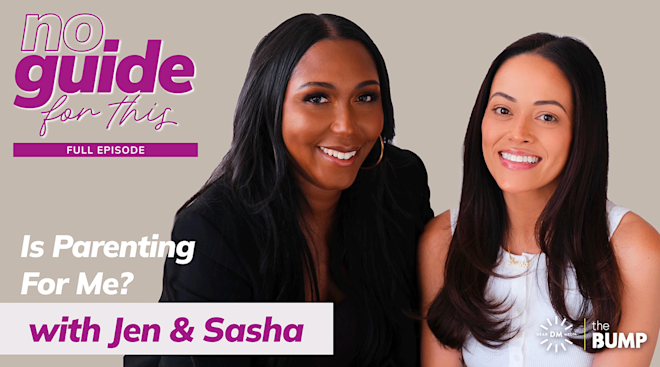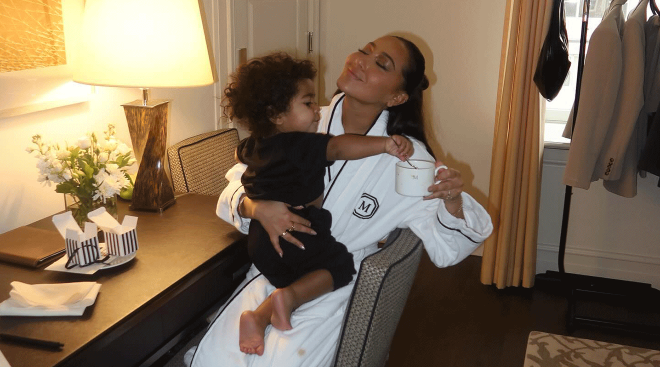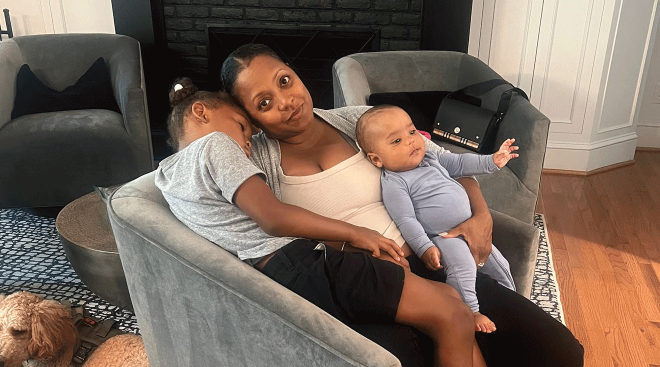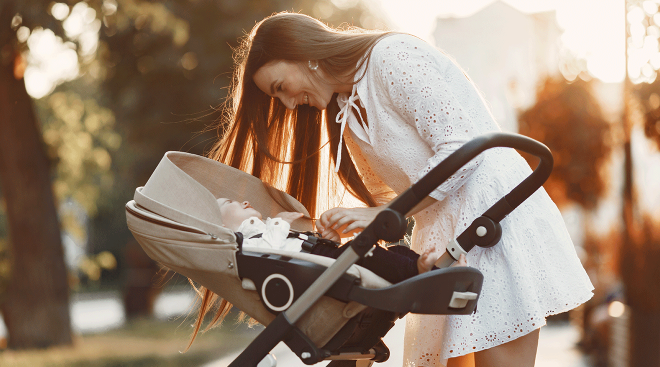Everything You Need to Know About Positive Parenting
What if we told you there’s a way to get your kids to behave—truly behave because they want to and not because they’ll earn more screen time or a sticker because of it? And what if we said you can do this without arguing and shouting and losing your mind? It’s true! And more importantly, you’ll be strengthening the bond between you and your little one while you’re at it. The secret? Positive parenting.
It’s a method of parenting that embraces giving positive discipline as opposed to negative, and getting to the root of bad behavior as opposed to reacting to it. Think: “time-ins” as opposed to time-outs. Intrigued? Us too. That’s why we rounded up some of the best experts in the field to find out more. Even if you end up trying just a few of the following positive parenting techniques, a happier, healthier, more peaceful household won’t be far behind.
There’s a lot of buzz around the term “positive parenting” these days, and while the definition can vary, the fundamentals are the same. The practice grew out of the 1960s, when some folks decided there had to be a better way to raise kids—that instead of punishing and rewarding them, we needed to listen to them. “Different branches of positive parenting came out of that,” says Laura Markham, PhD, founding editor of Aha! Parenting and author of Peaceful Parent, Happy Kids: How to Stop Yelling and Start Connecting. “Parents who practice positive parenting realize raising children is a sacred responsibility, and it’s not doing just the easiest or expedient thing….Positive parenting takes on the long-term task of raising a person who is emotionally intelligent.”
From a practical standpoint, positive parenting means always embracing positive discipline. But for any mom who has had it with her child’s incessant whining or is stressed about a work presentation or hasn’t gotten enough sleep—or is experiencing all three at once!—this parenting style can seem like a challenge. However, understanding the fundamentals behind it can help. Keep these positive parenting techniques in mind:
• Provide positive rather than negative guidelines. “Positive parenting is more a mindset than a method,” says David Walsh, PhD, a psychologist, author of Why Do They Act That Way? and founder of Mind Positive Parenting. “It’s based on scientific evidence showing the importance of a strong, affectionate attachment between parents and children.” Since harsh parenting styles don’t build that strong bond, positive parenting emphasizes positive guidance. So, for example, he explains: “Say, ‘Please use an inside voice’ instead of, ‘Don’t yell in the house.’”
• Employ positive discipline instead of punishment. For older kids, solutions-oriented discipline takes the place of punishment. So instead of banishing their video games for a week, parents work with them to get to the bottom of why the problem occurred and what needs to happen next, says Rebecca Eanes, author of The Positive Parenting Workbook: An Interactive Guide for Strengthening Emotional Connection. This type of discipline puts the focus on the child’s behavior and how they can fix and improve it, instead of on what the parent thinks of that behavior. “When we work as a team to solve problems, our relationship remains intact, meaning we don’t lose our influence,” she says.
• Carve out daily one-on-one time. “Each parent should dedicate time every single day to each child, where you are fully present in mind, body and soul, doing whatever the child wants to do. It is mind-blowingly powerful and effective,” says Amy McCready, founder of PositiveParentingSolutions.com and author of If I Have to Tell You One More Time and The “Me, Me, Me” Epidemic. Truth is, parents are always multitasking, especially if there’s more than one child. “Very few times during the day does that child get one-on-one attention. When a child gets emotional attention, he doesn’t have to resort to negative behavior to get that attention,” she says. McCready suggests creating a schedule so some time is slotted, say, every night after dinner. “If there are two parents in the home, the child needs emotional connection with both,” she says. “That’s how they’re going to thrive. The payoff for parents is you invest 10 to 15 minutes but you get time back in cooperative behavior and fewer power struggles.”
• Understand your child’s abilities and limitations. “Parents don’t always have the most realistic expectations for their children’s behavior and developmental level,” says Randy Ahn, PhD, MLIS, implementation consultant with Triple P America. “It’s important that parents be aware of the physical, mental and emotional capabilities that their children possess.” Be aware of your own limitations too. The more realistic you are, the less stress and frustration you and your child will feel.
• Model the behavior you would like to see in your children. Kids are more likely to imitate our behavior than follow our words—so if we stay positive in trying moments, they’re more likely to as well. How to even begin? “Don’t be reactive; get your own emotions under control first,” says Claire Lerner, LCSW, child development specialist and senior parenting advisor at Zero to Three. “Tune in to what your child needs from you in that moment to cope. Instead of joining his distress, be his rock and see your role as developing coping skills to manage moments when he’s frustrated, disappointed or angry. When parents see it through that lens, they feel much more effective,” she says. If necessary, you can tell your kids you need to take a moment for yourself to collect your thoughts. You can train yourself to stay more emotionally in control during tantrums by using tools like mediation apps. One of our favorites, Expectful, is pregnancy and motherhood-specific, and designed with the intention of reducing your stress levels and strengthening your relationship with your child.
• Stick to a routine. A common positive parenting technique is called a “when-then routine,” which not only helps children stay on schedule and gives them structure, but also motivates them to get the less desirable tasks done first. So in the morning, McCready suggests, tell your child, “When you’re dressed and your backpack is by the door, then we’ll have special time until we leave for school.” At night, tell her, “When you’re done with your bath and in your pj’s, then we can read a bedtime story.” “These routines are super-effective for keeping a child on a good routine so she can get ‘yucky’ stuff done without a lot of pushback,” McCready says.
• Teach children to calm down. “Young children do not yet have the brain maturity to regulate their own emotions properly or think about what they’ve done in terms of cause and effect,” Eanes says. That’s why positive discipline doesn’t incorporate time-outs, only time-ins. “In fact, time-out causes alarm in young children that often leads to anxiety or worse behavior because parents are withdrawing the attachment that children so desperately need.” So what happens during a time-in? You work with your child to take deep breaths, watch glitter swirl in a jar or draw in a coloring book—activities that calm you and your child down. “When the parent and child are calm and connected, the parent then discusses age-appropriate ways to handle the situation better,” Eanes says.
• Make time for training. This starts with figuring out what skill deficit is causing your child to misbehave, McCready says, and coming up with strategic solutions. “If she is constantly interrupting, for example, teach your child how to get an adult’s attention in positive ways without interrupting, such as putting a hand on her shoulder or elbow. If she’s speaking in a whiny voice, create a secret signal for when you hear it, such as putting your hands over your ears. Whatever the problem, do role-playing so she can practice the appropriate behavior,” McCready explains.
• Encourage good behavior. Detailed praise—such as, “Thanks for picking up all your toys when I asked you to”—is more effective than a general “Good job,” experts say. Think too much praise is a bad thing? It’s not, according to proponents of positive parenting. “Parents underestimate the power of their words in shaping the behavior and attitudes of their children. Positive parenting doesn’t advocate nonstop praising, as that would quickly lose its desired effect. Instead, praise as social recognition should be used to help children navigate what is acceptable and desirable behavior,” Ahn says.
Now that you have a better understanding of what positive parenting is and a few of the most important positive parenting techniques, you can start using them with your own child. Consider these three common scenarios and how to use positive discipline to handle each one:
1. Tantrums
Don’t respond to tantrums with the adult version of a meltdown. Instead, be an “emotion coach.” “Emotion coaching helps kids learn how to manage powerful emotions and turns would-be power struggles into learning opportunities,” Walsh says. What it doesn’t do is let kids get away with inappropriate behavior. “In fact,” Walsh says, “setting and enforcing clear limits and consequences is an important strategy to help kids regulate their emotions.”
So when your child has a tantrum, the first thing to do is listen. What is she trying to communicate to you through her words or behaviors? Next, name your child’s emotions. “Maria, I can see that you’re really frustrated. Is that right?” Follow up with validating that feeling: “It makes sense that you’re frustrated. You want to go to your friend’s house now, but there isn’t time before dinner. Are you feeling angry with me for not letting you go now?” Then, address the poor behavior by saying something like, “It’s okay to feel angry—I know you were looking forward to hanging out with Veronica. But it’s not okay to throw all your books on the floor. You can take some time to calm down. Then please pick your books up off the floor and put them back on the shelf before dinner. If you choose not to pick your books up, then you are choosing to not go over to Veronica’s tomorrow.”
At a later point you can process what happened. Say to your child, “Next time you feel that frustrated with me, what could you do differently? What could you have said? Seeing your friends is really important to you and I understand that. Family dinner is really important to me. What could we do different next time to avoid this conflict?” With very young children it’s helpful to give them the words. Tell your child, “You can say, ‘Mommy, I’m frustrated. Please help me!’”
2. Hitting
“Hitting is almost always the result of a skill deficit, meaning the child doesn’t have the skills to manage his big emotions in a positive way,” McCready says. “With positive parenting, the focus is on training.” That means recognizing the triggers—does your child start hitting when he’s tired or hungry? Make sure he’s getting enough sleep too. “When kids aren’t well rested, they can’t handle emotional needs,” she says.
So what to do in the moment? First, make an emotional connection. Find out why he’s upset, then show empathy and tell him you understand. Making sure he’s not continuing to harm himself or others, help him calm his feelings. “That can be belly breathing, squeeze toys or putting on headphones to listen to music—it’s not handing him a device like an iPad or phone,” McCready says.
Once your child is calm, practice a redo. “Say, ‘When you get really, really mad at your brother, what can you do instead?’” McCready suggests. “Practice role playing outside of the moment over and over again. It takes time, because kids don’t know how to manage big feelings.” Remember, with positive parenting, you shouldn’t think about punishment first—it’s about recognizing the behavior and figuring out what’s causing it. The next time your child is about to hit someone, you can use a nonverbal gesture for a redo, such as circling your finger, to try to prevent it from happening.
3. Fighting bedtime
Getting your child into bed on time can be a nightly struggle. “Parents think they need to crack down, but it’s the opposite, because then the kid becomes more defiant and you set up power struggles,” Markham says. At the same time, the permissive parents who allow for “five more minutes” aren’t helping matters either—they’re just training their kids that they can push back bedtime, and that compromises their sleep. Instead, practice positive parenting and ease your child into bedtime. “Go over to your child, and if she’s playing with Legos, ask what she’s building, admire it and then tell her it’s time to get ready for bed,” Markham says. You can also opt to give a five-minute warning, but you have to be clear that it’s a set time every night. “By training her expectation that Mom and Dad are serious about bedtime, the child stops protesting,” Markham says. “You can be really understanding about her not wanting to go to bed, but you still have to set a clear limit and enforce it.”
Disclosure: This post contains affiliate links, some of which may be sponsored by paying partners.
This information is prepared for informational purposes only. XO Group Inc. and its affiliates do not recommend or endorse any specific tests, physicians, products, procedures, opinions, or other information that may be mentioned herein. You should consult with your healthcare provider about your specific health needs. You should always speak with your doctor before you start, stop, or change any prescribed part of your care plan, exercise program or treatment.
Published December 2017
Navigate forward to interact with the calendar and select a date. Press the question mark key to get the keyboard shortcuts for changing dates.




















































